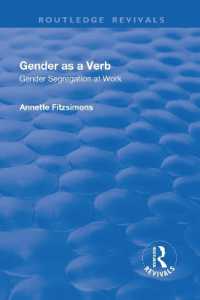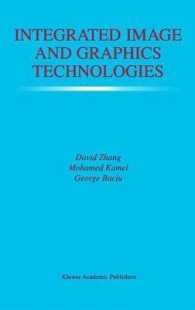- ホーム
- > 洋書
- > 英文書
- > History / World
Full Description
Here, leading scholars-including Hodgson himself-confront the longstanding theory that a liberal consensus shaped the United States after World War II. The essays draw on fresh research to examine how the consensus related to key policy areas, how it was viewed by different factions and groups, what its limitations were, and why it fell apart in the late 1960s.
Contents
Introduction: Reconsidering the Liberal Consensus
Robert Mason and Iwan Morgan
1. Revisiting the Liberal Consensus - Godfrey Hodgson
2. Historians and the Postwar Liberal Consensus - Michael Heale
3. The Reach and Limits of the Liberal Consensus - Gary Gerstle
4. The 1930s Roots of the Postwar "Consensus" - Wendy L. Wall
5. The Keynesian Consensus and Its Limits - Iwan Morgan
6. Social Welfare in the United States, 1945-1960 - David Stebenne
7. Red-Hunting and Internal Security: Conflict in the Age of Consensus - Alex Goodall
8. Containment: A Consensual or Contested Foreign Policy? - Andrew Preston
9. Sunbelt Patriarchs: Lyndon B. Johnson, Barry Goldwater, and the New Deal Dissensus - Elizabeth Tandy Shermer
10. "Down the Middle of the Road": Dwight D. Eisenhower, the Republican Party, and the Politics of Consensus and Conflict, 1949-1961 - Robert Mason
11. "We Have Run Out of Poor People": The Democratic Party's Crisis of Identity in the 1950s - Jonathan Bell
12. Billy Graham's Neo-evangelical Triumph and the Limits of the Liberal Consensus - Uta A. Balbier
13. Gender in an Era of Liberal Consensus - Helen Laville
14. Memories of the Movement: Civil Rights, the Liberal Consensus, and the March on Washington Twenty Years Later - George Lewis
Contributors
Index







